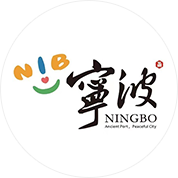Ningbo is located in the middle section of China's mainland coastline, blessed with access to rivers, lakes, and the sea.
"To the south lie Fujian and Guangdong, to the east the Japanese, to the north Goguryeo. Merchant ships travel to and fro, and goods abound." From Ningbo, one could sail north and east to the Korean Peninsula and the Japanese archipelago, or south along the coasts of Fujian and Guangdong to reach Southeast Asia and even farther to the Western seas.
Thanks to its unique natural geography, Ningbo became one of ancient China's major ports for maritime foreign exchange, gradually flourishing with the rise of the Maritime Silk Road.
Ningbo is among the earliest regions in human history where shallow-sea activities were undertaken.
Artifacts such as dugout canoes, wooden paddles, and ceramic boat models unearthed from primitive Hemudu mooring points show that as early as 7,000 years ago, the ancestors of Ningbo were already navigating rivers, lakes, and seas, engaged in water-based production activities. During the Spring and Autumn period, King Goujian of Yue built the Juzhang Port, constructed warships, and developed a navy, while attracting "seafaring traders" to do business. By then, Ningbo had already become a key port with both military and commercial functions.
The Hemudu Culture marks the origin of Ningbo's Maritime Silk Road. Juzhang Port provided the historical foundation for its development. The many imported goods excavated from Han dynasty sites, along with the large quantities of export ceramics produced at the ancient kilns of Shanglin Lake, set a new milestone, signifying that Ningbo's marine culture had entered an era centered on dialogue between Eastern and Western civilizations.
Over six centuries of development from the Qin to the Jin dynasties brought economic growth to the Sanjiang (Three Rivers) region. Trade flourished, and cultural exchange extended both domestically and abroad. The invention and export of mature celadon ware became a major industry in the regional economy. Mirror-making craftsmen from the Wu region crossed the sea to Japan via Juzhang Port, taking with them advanced mirror-making techniques. The Indian monk Narayana travelled by water to meditate and live in seclusion at Wulei Mountain, then part of Juzhang. As Ningbo exported goods and culture, it also became a gateway for imports into China. Sanjiangkou (the Three Rivers Estuary) became one of the earliest hubs for international trade and cultural exchange in Chinese history.
Ningbo's Sanjiangkou. (Photo by Haishu Wenbo)
The Maritime Silk Road Heritage of Ningbo
During the formation and development of the Maritime Silk Road, the early inhabitants of Ningbo left behind a rich legacy of tangible cultural heritage related to maritime trade.
Although some Maritime Silk Road sites in Ningbo were damaged due to urban redevelopment since the Republic of China era, overall, the city's maritime heritage remains relatively well-preserved. It is notable for its distinct characteristics and profound cultural significance, providing valuable insight into Ningbo’s development level and influence along the ancient Maritime Silk Road.
According to incomplete statistics, more than 120 sites and relics related to the Maritime Silk Road—dating from the late Eastern Han dynasty to the mid-Qing dynasty—are still preserved within Ningbo. These are mainly concentrated in the coastal and riverside areas centered around Sanjiangkou (the Three Rivers Estuary).
Among them, port trade sites bear crucial historical information about Ningbo’s commerce with countries and regions along the Maritime Silk Road.
Representative and well-preserved examples include the Yongfeng Warehouse, Yupu Gate Wharf, and the Anqing Guild Hall Site, all of which offer important evidence of Ningbo’s role in ancient maritime trade.
Yongfeng Warehouse Relic Site Park. (Photo by Ningbo Academy of Social Sciences)
The Yongfeng Warehouse Relic Site is a nationally protected cultural heritage site and the first large-scale official Yuan dynasty warehouse ever discovered in China. It was primarily used to store porcelain for overseas trade. A large number of export ceramics from renowned kiln systems were unearthed at this site, providing key evidence for identifying Ningbo’s significant role in the Maritime Silk Road during the Yuan dynasty.
The Yupu Gate Wharf Site is located on the southern bank of the Yao River along the eastern section of Heyi Road in Haishu District, Ningbo. During archaeological excavations in 2006, fragments of Longquan and Yue ware from the Southern Song dynasty were discovered at the site. Based on glaze and clay characteristics, these artifacts date back to the Southern Song period. The site offers crucial physical evidence for studying the development of Ningbo as a port city since the Tang and Song dynasties, and its involvement in the Maritime Silk Road.
The Anqing Guild Hall Site is located on the east bank of Sanjiangkou in central Ningbo. It was first built in the 30th year of the Daoguang reign in the Qing dynasty (1850). The building served both as a temple for the worship of Mazu and as a social venue for Northern merchants and maritime workers active in the Ningbo port area. The Anqing Guild Hall is a rare surviving example of a combined temple-guild hall structure in China and the only fully preserved guild hall complex in Zhejiang Province. It stands as an important piece of material evidence for the study of Mazu culture and the history of ancient Chinese maritime trade and transportation.
Source: Ningbo University Library WeChat
Editor: Ye Ke



